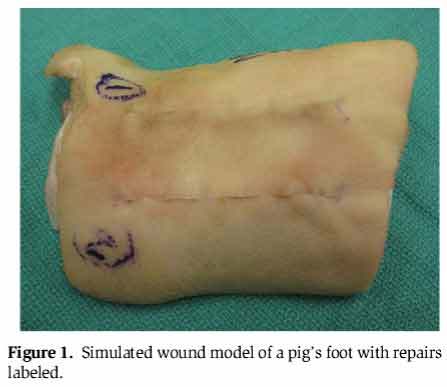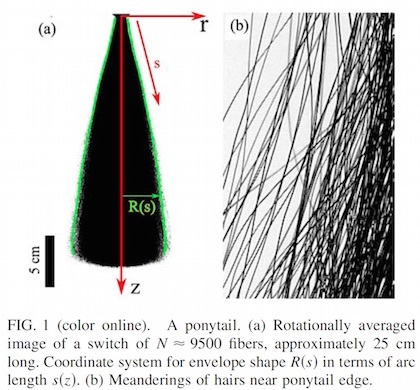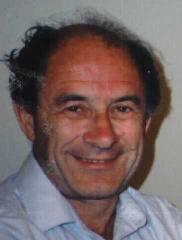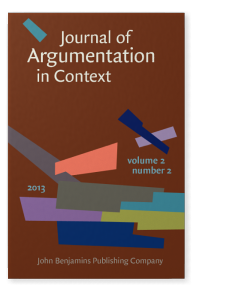Marc Abrahams's Blog, page 303
October 10, 2015
Arnold’s view of Russian vs. American mathematicians
The late, colorful Russian mathematician Vladimir Igorevich Arnold [pictured here] discussed how certain nations are famed for the way their mathematicians go about mathematicianing. This is from an interview he gave to S.H. Lui (and published in the Notices of the American Mathematical Society, in 1997):
QUESTION: Do you notice any differences in the way people from different cultures do mathematics?
ARNOLD: I was unaware of these differences for many years, but they do exist. A few years ago, I was participating in an International Science Foundation (ISF) meeting in Washington, DC. This organization distributes grants to Russian scientists. One American participant suggested support for some Russian mathematician because “he is working in a good American style.” I was puzzled and asked for an explanation. “Well,” the American answered, “it means that he is traveling a lot to present all his latest results at all our conferences and is personally known to all experts in the field.” My opinion is that ISF should better support those who are working in the good Russian style, which is to sit at home working hard to prove fundamental theorems which will remain the cornerstones of mathematics forever!

David Brooks joins the Hair Club for Science Journalists (LFFFHCfSJ)
David Brooks has joined the Luxuriant Flowing, Former, or Facial Hair Club for Science Journalists (LFFFHCfSJ), the newest sibling club of the Luxuriant Flowing Hair Club for Scientists (LFHCfS). He says:
This photo of me from the late 1970s demonstrates both unkempt luxuriant flowing hair (all white American males under age 25 in the 1970s had ugly unkempt hair – it was a rule) and excellent dietary habits.
David Brooks, LFFFHCfSJ
Science Journalist
Concord (NH) Monitor, GraniteGeek.org
Concord, New Hampshire, USA


October 9, 2015
The Effect of Music on the Efficiency of Surgical Closures
 “Time” as they say “is money.” Especially relevant perhaps, in a plastic surgery operating theatre, in which running costs can reach $66 a minute. And where, for example, “A 10% reduction in operative time per hour equals savings of $396 per hour.” What might help to speed-up surgeons’ performance (without of course compromising accuracy and efficiency)? Music perhaps? To find out, an experimental study was performed by Shelby R. Lies MD, and Professor Andrew Yuan Zhang MD, of the Division of Plastic and Reconstructive Surgery, Department of Surgery, University of Texas Medical Branch.
“Time” as they say “is money.” Especially relevant perhaps, in a plastic surgery operating theatre, in which running costs can reach $66 a minute. And where, for example, “A 10% reduction in operative time per hour equals savings of $396 per hour.” What might help to speed-up surgeons’ performance (without of course compromising accuracy and efficiency)? Music perhaps? To find out, an experimental study was performed by Shelby R. Lies MD, and Professor Andrew Yuan Zhang MD, of the Division of Plastic and Reconstructive Surgery, Department of Surgery, University of Texas Medical Branch.
“The purpose of our study is to evaluate the effects of playing music on plastic surgery residents performing layered wound closure on a simulation model using pigs’ feet.”
[…]
“The pigs’ feet were stored and separately presented to three blinded faculty plastic surgeons [the following day] for grading. The quality of repair was graded on a 1-5 scale. Factors taken into consideration by the faculty for the final summative grade included apposition of wound edges, evenness in superficial to deep plane, step-offs, overlapping, any gaping with manual spreading perpendicular to repair, suture knot visibility or unraveling, uniform appearance, and the amount of eversion.”
[…]
“Our study showed improved efficiency of repair in a simulated wound model while residents listened to music of their preference. There is an overall reduction of operative time of 8% in all residents. The reduction improved to 10% in upper-level residents. The quality of the repair also improved slightly in the music-listening group. In the current health care environment, where cost reduction is center stage and operative time is money, every second counts.”
see: ‘Prospective Randomized Study of the Effect of Music on the Efficiency of Surgical Closures’ Aesthetic Surgery Journal, 2015, Vol 35(7).
Also see: Background music can cause confusion in the operating theatre (new study)

October 8, 2015
PotPet – potted plants which follow you and ask for water
“PotPet acts autonomously like pets: it automatically moves to sunny places or approaches people when it requires water.“
Details of ‘PotPet: Pet-like Flowerpot Robot’(from Ayumi Kawakamim Koji Tsukada, Keisuke Kambara and Itiro Siio at Ochanomizu University, Tokyo) were published in Proceedings of 5th International Conference on Tangible, Embedded, and Embodied Interaction, January 22–26, 2011, Funchal, Portugal.
Tsukada shared the 2012 Ig Nobel Prize for acoustics, for inventing the SpeechJammer.
Also don’t miss: Justin Shull’s terrestrial shrub rover.

Lucas Brouwers joins the Hair Club for Science Journalists (LFFFHCfSJ)
Lucas Brouwers has joined the Luxuriant Flowing, Former, or Facial Hair Club for Science Journalists (LFFFHCfSJ), the newest sibling club of the Luxuriant Flowing Hair Club for Scientists (LFHCfS). He says:
I am a science writer from the Netherlands, specialized in biology and evolution. Once, I was the proud owner of a beard. Jealous friends lured me into a barber shop under the pretense that we would visit a razor museum. It was over in seconds. For the first time in years, I felt the tingling chill of fresh air flowing around my chin. The beard grew back. Naturally.
Lucas Brouwers, LFHCfS
Science Journalist
NRC Handelsblad
Amsterdam, The Netherlands


Ellen de Bruin becomes charter member of the Luxuriant Flowing, Former, or Facial Hair Club for Science Journalists (LFFFHCfSJ)
Ellen de Bruin has joined — indeed, become the first member of — the Luxuriant Flowing, Former, or Facial Hair Club for Science Journalists (LFFFHCfSJ), the newest sibling club of the Luxuriant Flowing Hair Club for Scientists (LFHCfS). She says:
I am a science journalist at the Dutch newspaper NRC Handelsblad, writing mainly about social sciences, human behavior, and weird things. Hair conditioner has changed my life, though not necessarily visibly so. When my first book Dutch Women Don’t Get Depressed came out in 2007, a columnist of The Independent on Sunday, a British newspaper, stated: ‘De Bruin is scruffy-looking with no hair style […] With respect, how many of us wish to be Dutch?’ Scruffy, that’s very sweet, but of course I do prefer the word ‘luxuriant’.
Ellen de Bruin, LFHCfS
Science Journalist
NRC Handelsblad
Amsterdam, The Netherlands


October 7, 2015
Podcast #32: A report on reports on reports, coffee, and ponytails
A report on reports on reports; The physics of ponytails; Why people spill coffee when they walk; and The pleasures —yes pleasures — of reading textbooks — yes, textbooks— all these all turn up in this week’s Improbable Research podcast.
Click on the “Venetian blinds” icon — at the lower right corner here — to select whichever week’s episode you want to hear:
SUBSCRIBE on Play.it, iTunes, or Spotify to get a new episode every week, free.
This week, Marc Abrahams tells about:
Some more (following on from last week) of the things that won Ig Nobel Prizes in 2012. (“Actions Needed to Evaluate the Impact of Efforts to Estimate Costs of Reports and Studies,” US Government General Accountability Office report GAO-12-480R, May 10, 2012./ “Shape of a Ponytail and the Statistical Physics of Hair Fiber Bundles,” Raymond E. Goldstein, Patrick B. Warren, and Robin C. Ball, Physical Review Letters, vol. 198, no. 7, 2012. / “Ponytail Motion,” Joseph B. Keller, SIAM [Society for Industrial and Applied Mathematics] Journal of Applied Mathematics, vol. 70, no. 7, 2010, pp. 2667–72. Featuring dramatic readings by Daniel Rosenberg . ) Here’s a graphic image from the “Shape of a Ponytail” study:

List of everything that won an Ig Nobel Prize in 2012.
The Pleasure of Reading Textbooks (“The Effects of Pre-Existing Inappropriate Highlighting on Reading Comprehension,” Vicki Silvers and David Kreiner, Reading Research and Instruction, vol. 36, 1997, pp. 217-23. Featuring dramatic readings by Sue Wellington . )
The mysterious John Schedler or the shadowy Bruce Petschek perhaps did the sound engineering this week.
The Improbable Research podcast is all about research that makes people LAUGH, then THINK — real research, about anything and everything, from everywhere —research that may be good or bad, important or trivial, valuable or worthless. CBS distributes it, both on the new CBS Play.it web site, and on iTunes and Spotify).

The Journal of Argumentation in Context
Do you need to argue about arguing? Here’s the academic research journal for you: the Journal of Argumentation in Context:

October 6, 2015
Trébuchet and de Grouchy
Trébuchet and de Grouchy collaborated on this study, many years ago:
“Fetomaternal transfusion of blood lymphocytes and identification of the sex of the fetus” [article in French], J. de Grouchy and C. Trébuchet, Annales de Genetique, vol. 14, no. 2, June 1971, pp. 133-7.
BONUS (unrelated): A different sort of trebuchet:

October 5, 2015
The naked truth (estimating body shape under clothing)
Remember ‘X-Ray Specs’? “Look at your friend. Is that really his body you ‘see’ under his clothes?” asked the advertisements. Though no doubt disappointing to some, the answer to the question was of course ‘No’. Since their invention however, progress has been made in computerised body visualisation systems, devices which also can’t ‘see’ under peoples clothes, and yet, in a curious kind of way (as the video above shows), can.
For background, there’s probably no better place to start than the website of professor Michael Black of the Max Planck Institute for Intelligent Systems (Perceiving Systems), Tübingen. Germany. The professor began publishing research details in 2008 (along with Dr. Alexandru O. Bălan ) see: ‘The naked truth: Estimating body shape under clothing’ In European Conf. on Computer Vision, ECCV, Springer-Verlag, volume 5304, LNCS, pages 15-29, Marseilles, France. October 2008.
“We propose a method to estimate the detailed 3D shape of a person from images of that person wearing clothing. The approach exploits a model of human body shapes that is learned from a database of over 2000 range scans. We show that the parameters of this shape model can be recovered independently of body pose. We further propose a generalization of the visual hull to account for the fact that observed silhouettes of clothed people do not provide a tight bound on the true 3D shape. With clothed subjects, different poses provide different constraints on the possible underlying 3D body shape. We consequently combine constraints across pose to more accurately estimate 3D body shape in the presence of occluding clothing. Finally we use the recovered 3D shape to estimate the gender of subjects and then employ gender-specific body models to refine our shape estimates.“
Applications :
“There are many applications and future directions for this new line of research. For human tracking in video it may be useful to estimate limb lengths, body shape parameters and body mass as these could be used in the inference of dynamics. Body shape parameters could be used in visual tracking applications to identify and re-acquire subjects who come in and out of the field view. For forensic video applications, the extraction of body shape parameters could be useful in identifying suspects. There are also many applications of these methods in personal fitness, retail apparel and computer games.”
Privacy concerns :
“Privacy concerns must be addressed for any technology that purports to ‘see’ what someone looks like under their clothes. Unlike backscatter X-ray and infra-red sensors, our approach does not see through clothing. It does not have any information about the person’s body that is not available essentially to the naked eye; in this sense it is not intrusive. [orig. emphasis]”
Note: The work was supported in part by the Office of Naval Research.
Update: Since 2008 many other research teams across the globe have been looking into the possibilities of algorithmic clothing removal. For a recent example, see W.-Y. Chang and Y.-C. F. Wang, ‘Seeing Through The Appearance: Body Shape Estimation Using Multi-View Clothing Images’, IEEE International Conference on Multimedia & Expo (ICME), June 2015.
Bonus: If you have WebGl™ running on your internet browsing system (it’s a built-in component of many modern browsers, but you may have to enable it) then you can view an interact in real-time with the BodyVisualiser provided by Max Planck Gesellschaft.

Marc Abrahams's Blog
- Marc Abrahams's profile
- 14 followers





